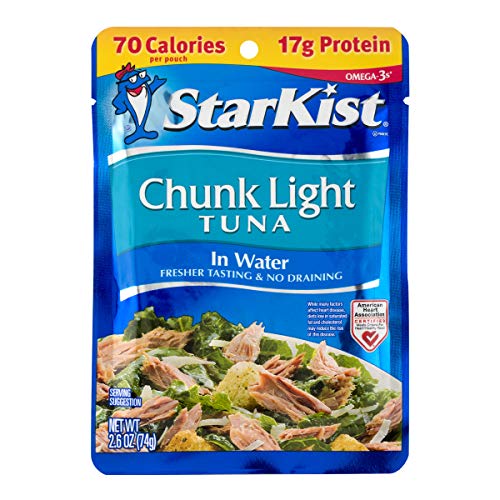Have you ever noticed that sometimes IBS symptoms begin when someone “gets serious” about losing weight and begins training for a big race while on a rigid diet?
Exercise changes nerve activity and gut motility, and prolonged physical activity with certain medications or inadequate hydration can lead to ischemic colitis. However, I see a different trigger most often in teen, college, and pre-professional athletes.
An intentional or unintentional energy deficit achieved through overtraining, under-nourishing, and under-resting, can cause nasty health consequences. Low energy availability can lead to Relative Energy Deficiency in Sport (RED-S) and systemic harm. The International Olympic Committee (IOC) describes RED-S as a syndrome of “impaired physiological functioning caused by relative energy deficiency.”
The IOC mentions that RED-S-associated problems can include, but are not limited to:
- Decreased resting metabolic rate
- Period disruption or period loss due to hormonal disruption AKA functional hypothalamic amenorrhea
- Low bone mineral density and poor bone health
- Impaired immune health leading to more respiratory and GI infections and lower secretion of protective sIgA
- Impaired protein synthesis
- Impaired endothelial function, alterations to blood pressure and heart rate, and unfavorable lipid profiles
- Stool leakage, constipation, and more gastrointestinal symptoms
- Iron deficiency (which can decrease appetite, worsening LEA)
- Depressive symptoms, mood disturbances, and decreased ability to manage stress
RED-S is caused by low energy availability. The British Journal of Sports Medicine published two great infographics in 2019 that capture the essence of low energy availability. They show that when someone develops low energy availability by intentionally or unintentionally eating too few Calories for their physical activity, recovery after exercise, and all the basic physiological life functions.
An eating disorder or disordered eating is an obvious risk factor for low energy availability. The IOC notes that eating disorders are prevalent among athletes and advocates for better screening, prevention, treatment, and research in this area. A wonderful first resource for someone suffering who suspects an eating disorder is the National Eating Disorder Helpline.
However, a diagnosable eating disorder is not required to develop RED-S. In someone with high energy needs, it is easy to under-fuel.
Frequent barriers to fueling that I see in young athletes with high energy needs are:
- Pressure to maintain a leaner physique for sports-related aesthetics or performance (e.g. maintaining qualification for a weight class for wrestling or a certain physique for ballet)
- Lots of stressful schoolwork and homework
- Limited time to eat and no snack breaks
- A hectic schedule with lots of distractions
- Choosing mainly lower Calorie foods because they’re perceived as healthier
- Both voluntary and medically necessary dietary restrictions
- Nutrient deficiencies or medications that decrease appetite
According to RED-S expert Dr. Nicky Keay in the British Journal of Sports Medicine, athletes are in control of three key elements to prevent, address, and recover from RED-S:
- Training load.
- Nutritional intake.
- Recovery quality.
Here are my 7 Practical Tips for Preventing Low Energy Availability for Individuals with GI disorders:
- Build a team to help you--especially if you suspect an eating disorder. Because RED-S risk overlaps with that of eating disorders, athletes should be screened for both and may need to see eating disorder specialists. Someone invested in athletics who also has gastrointestinal issues should have a qualified trainer, a knowledgeable sports RDN, a trustworthy primary care physician, a quality gastroenterologist, and other specialists as needed, such as a coach, psychiatrist, or counselor.
- Make any diet or lifestyle changes ONE at a time. Do not experiment with food eliminations without professional guidance. And even with professional help, consider scheduling dietary changes out-of-season or away from training for big athletic events.
- Don’t skip meals and snacks, especially on training days. A sports RDN can help strategize on timing around training to minimize GI discomfort. Eating every 3-4 hours is often a good start--that translates to breakfast, lunch, dinner, and 2-3 snacks.
- Meal plan and shop weekly so that you have meals and snacks available. An empty fridge and pantry is a practical form of energy deficiency itself.
- You must rest. Period. I suspect this could be the hardest intervention for competitive athletic personalities. But there is just no substitute for rest in muscle recovery and digestion. This means not just adequate sleep and rest breaks during activity, but also regularly planned rest days. Work with a qualified trainer who will help you prioritize both your training and rest in your schedule.
- Only implement absolutely necessary dietary restrictions. Especially if you travel for competitions, following gluten-free or Low FODMAP diets, veganism, or any other restrictions or rigid food rules can make it challenging and stressful to find enough food to meet high energy needs. If you must implement a restriction, such as a gluten-free diet for celiac disease, consult an RDN to help you strategize and plan your travel meals.
- Both nutrient density and Calories matter. For example, meeting Calorie needs without enough protein, minerals, or vitamins such as vitamin D will lead to poor bone health over time. However, using supplements to meet one’s vitamin, mineral, and protein needs without enough Calories will still cause systemic harm over time. Both nutrients and Calories matter.
RED-S treatment should be individualized, so if you suspect RED-S, speak with your physician.
- Ackerman, K. E., Holtzman, B., Cooper, K. M., Flynn, E. F., Bruinvels, G., Tenforde, A. S., Popp, K. L., Simpkin, A. J., & Parziale, A. L. (2019). Low energy availability surrogates correlate with health and performance consequences of Relative Energy Deficiency in Sport. British journal of sports medicine, 53(10), 628–633.
- Keay, N., & Francis, G. (2019). Infographic. Energy availability: concept, control and consequences in relative energy deficiency in sport (RED-S). British journal of sports medicine, 53(20), 1310–1311.
- Mountjoy, M., Sundgot-Borgen, J. K., Burke, L. M., Ackerman, K. E., Blauwet, C., Constantini, N., Lebrun, C., Lundy, B., Melin, A. K., Meyer, N. L., Sherman, R. T., Tenforde, A. S., Klungland Torstveit, M., & Budgett, R. (2018). IOC consensus statement on relative energy deficiency in sport (RED-S): 2018 update. British journal of sports medicine, 52(11), 687–697.
- Ackerman, K. E., Stellingwerff, T., Elliott-Sale, K. J., Baltzell, A., Cain, M., Goucher, K., Fleshman, L., & Mountjoy, M. L. (2020). #REDS (Relative Energy Deficiency in Sport): time for a revolution in sports culture and systems to improve athlete health and performance. British journal of sports medicine, 54(7), 369–370.



















Comments
Join The Conversation...